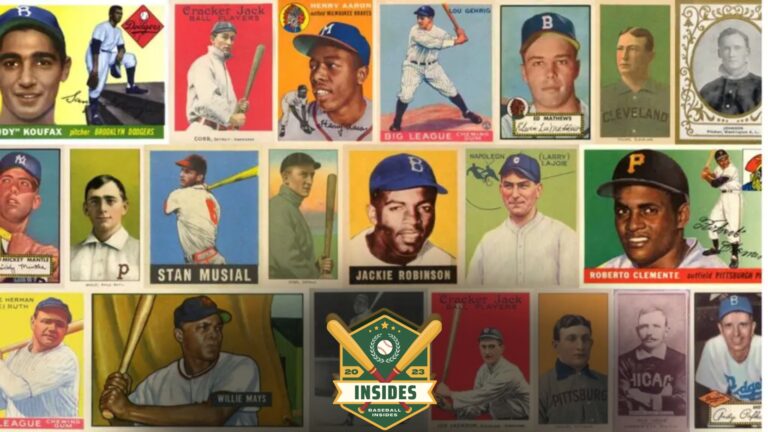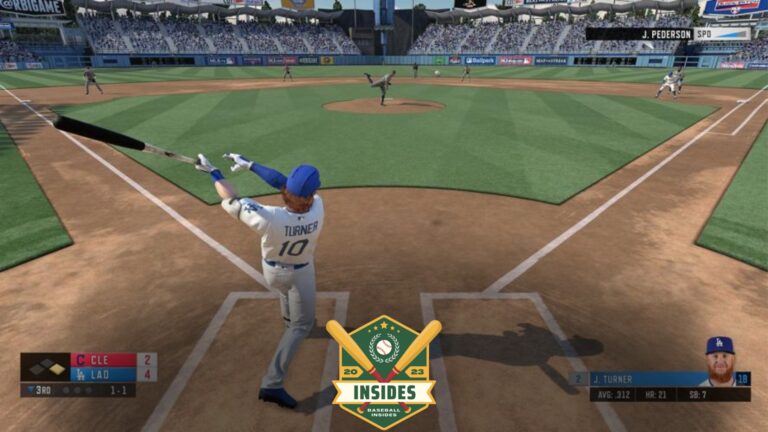
In this article:
Have you ever heard the term “BB” while watching a baseball game and scratched your head in confusion? Well, you’re not alone. Baseball, like any sport, has its unique terminology that can sometimes feel like a foreign language to newcomers.
So, what does BB mean in baseball? In baseball, BB stands for ‘Base on Balls. also called a ‘walk. This happens when a pitcher throws four pitches out of the strike zone during a batter’s turn at the plate, allowing the batter to advance to first base without needing to hit the ball.
Now that we’ve cleared that up, let’s dive deeper into this exciting aspect of America’s favorite pastime.
BB Versus Strikeout: What’s the Difference?
So, you’re wondering about the difference between a BB, a base on balls, and a strikeout in baseball? Well, let’s dig into that a bit!
The Concept of BB
First up, BB. BB stands for ‘Base on Balls’ in baseball, a walk. This situation occurs when a pitcher throws four pitches out of the strike zone, none of which are swung at by the batter.
Understanding Strikeout
Now, a strikeout. This is quite different. A strikeout happens when a pitcher throws three strikes within the strike zone or the batter swings and misses three times, whether the pitch was in the strike zone.
BB vs. Strikeout: The Key Differences
| BB (Base on Balls) | Strikeout | |
| Outcome | The batter advances to first base | Batter is out |
| Pitches | Four balls outside the strike zone | Three strikes within the strike zone (or swung at and missed) |
| Impact on Game | This can lead to more runners on base, potentially resulting in more runs | Results in one out for the batting team |
So, while a BB can create scoring opportunities, a strikeout is a definite advantage for the defensive team, notching them one step closer to their turn at bat.
They’re very different, and understanding them can help you appreciate the strategy and nuance of baseball even more.
The Importance of BB in a Player’s Stats
Have you ever seen a baseball player’s stats and wondered what those two little letters, BB, actually mean? Well, you’re not alone!
BB in baseball stands for “Base on Balls”, also known as a ‘walk’. A batter is awarded a ‘walk’ if the pitcher throws four pitches deemed by the umpire to be outside the strike zone and the batter doesn’t swing at them.
Understanding BB Stats
So, you might ask, why is BB so important in a player’s stats? The answer is simple.
A BB not only represents a player’s ability to get on base, but it also shows their understanding of the game, their patience, and their ability to pressure the opposing pitcher.
For instance, if a player has many BBs, they are discerning at the plate and not easily lured into swinging at poor pitches.
This can pressure the opposing pitcher to make better pitches, resulting in more favorable hitting conditions for the batter.
Additionally, getting a BB is a free pass to first base, increasing a team’s chances to score.
BB and its Impact on Other Statistics
Now, let’s delve deeper into how BB affects other statistics. An increase in BB can lead to a player’s on-base percentage (OBP), a key statistic in baseball.
OBP calculates how often a batter reaches base, including hits, BB, and hit-by-pitches. Therefore, a high BB rate can significantly boost a player’s OBP.
BB can also impact a player’s batting average. Suppose a batter has a low batting average but a high BB rate. In that case, it shows they have good plate discipline and can still contribute to the team’s offense despite not getting many hits.
The Evolution of BB in Baseball
Let’s take a trip down memory lane and explore the evolution of the term “BB” in baseball.
Now, if you’re a newbie to the baseball terminology, you might be wondering, what exactly does BB mean? In baseball, “BB” stands for “Base on Balls,” indicating a walk.
Initially, the concept of “BB” wasn’t as clearly defined as it is today. In the early days of baseball, there were no definitive rules around what constituted a “walk.”
The batter might have avoided numerous pitches before being granted a base. Imagine the confusion and inconsistency!
It wasn’t until 1889 that a significant change occurred. At that time, the number of “balls” that constituted a “walk” was officially set at four. This major shift in the rules forever solidified the meaning of “BB” in baseball.
A prime example of such terminology is “OPS in Baseball” which stands for On-base Plus Slugging. This metric combines a player’s ability to reach base with their power-hitting capabilities, offering a comprehensive snapshot of their offensive value. Understanding OPS can significantly enhance a fan’s grasp of the game’s strategic nuances.
The Impact of BB on the Game
Since “BB” was defined, its influence on the game has been substantial. It brought in a new set of strategies for both batters and pitchers, making the game more tactical.
For batters, introducing BB offered a new way to reach the base without hitting the ball. This opened up the field for more strategic and patient hitting. For pitchers, it added a new layer of complexity, making pitch control a crucial skill.
BB in Modern Baseball
Fast forward to the present day, and the concept of BB has become an integral part of baseball. It’s a statistic that is closely monitored and often used to measure a player’s patience and discipline at the plate, as well as a pitcher’s accuracy and control.
So, next time you’re watching a baseball game and hear the term “BB,” you’ll know exactly what it means and the strategic significance it holds in the game.
From its early ambiguity to its modern-day importance, the evolution of “BB” is a fascinating part of baseball’s rich history.
Strategies for Increasing Your BB
Do you think your BB could use a boost? You’ve come to the right place. Let’s dive into some strategies that can help you increase your BB in baseball.
1. Patience at the Plate
It may sound simple, but patience at the plate is critical to increasing your BB. The more selective you are with pitches, the better your chances of drawing a walk. Sure, swinging at every pitch might seem tempting, but a discerning batter is a successful one.
2. Understanding the Strike Zone
Knowing your strike zone is critical. Understanding where a ball needs to be for you to hit it effectively can significantly increase your chances of getting a walk. Don’t swing at balls outside your strike zone – let the pitcher make the mistakes.
3. Mastering the Count
A batter who understands and uses the count to his advantage is likelier to draw a walk. If the count is in your favor (more balls than strikes), you can afford to be more selective with your swings. Conversely, if the count is against you, it might be time to be a bit more aggressive.
4. Studying the Pitcher
Every pitcher has patterns and tells. The more you study a pitcher, the easier it becomes to predict their behavior and strategy. This knowledge can give you an advantage when deciding whether to swing or wait for a better pitch.
5. Mental Toughness
Lastly, mental toughness plays a significant role in drawing walks. It takes a lot of discipline and nerve to let a potential strike pass you by in the hope that the next pitch will be a ball. Stay focused, stay patient, and trust your instincts.
Remember, increasing your BB is a process that requires practice and patience. But with these strategies in mind, you’re well on your way to becoming a walk-drawing expert!
Another key term in baseball analytics is “RBI in Baseball,” which stands for Runs Batted In. This statistic measures a player’s effectiveness in driving in runs, highlighting their contribution to the team’s offensive efforts.
RBIs are crucial for understanding a player’s impact on the outcome of games, making it a vital metric for players and analysts.
Top 10 Players with the Most BB in Baseball History
Alright, baseball fans, let’s dive into the history books and look at the ten players who have earned the most BB, or bases on balls, in their careers. Simply put, these are the batters who mastered the art of patience.
They could judge a pitch like no other, distinguishing between the ones worth swinging at and those better left alone.
The Top Ten
- Barry Bonds: The king of BB with a staggering 2,558 walks throughout his career.
- Babe Ruth: The Sultan of Swat himself, Ruth earned 2,062 walks.
- Ted Williams: Williams, with his keen eye, accumulated 2,021 BB.
- Joe Morgan: Morgan stands fourth on the list with 1,865 walks.
- Carl Yastrzemski: As fans affectionately know him, Yaz clocked in 1,845 BB.
- Mickey Mantle: The Commerce Comet earned 1,733 BB.
- Mel Ott: Ott’s patience at the plate resulted in 1,708 walks.
- Rickey Henderson: The Man of Steal holds the eighth spot with 1,694 BB.
- Jim Thome: Thome is just behind Henderson with 1,747 walks.
- Eddie Yost: Rounding out the top ten, Yost earned 1,614 BB in his career.
With their uncanny ability to judge a pitch, these players changed the game of baseball. They turned patience into a powerful tool, and their record numbers of bases on balls are a testament to that.
So the next time you hear the term BB in baseball, remember these greats and their impressive achievements.
BB in Baseball: A Key Metric for Team Success
Ever wonder what ‘BB’ means in the world of baseball? Well, you’re not alone. ‘BB’ is a term thrown around quite often and holds a significant place in assessing a team’s performance.
Deciphering the Baseball Lingo: BB
In baseball, ‘BB’ is an acronym for ‘Base on Balls’. This term is a nod to pitchers who end up walking batters. But what does that mean exactly? Allow me to break it down.
A ‘walk’, also known as a ‘base on balls’, occurs when a pitcher throws four pitches deemed ‘balls’ by the umpire in a single at-bat without the batter being struck out or put out. This allows the batter to advance to first base without risking an out.
For fans looking to experience the game in a unique and intimate setting, “Box Seats at a Baseball Game” represents the pinnacle of live sports viewing. Situated closer to the action, these seats offer unparalleled views and amenities, providing a memorable experience for any baseball enthusiast.
The Importance of BB in Baseball
While it might seem minor, ‘BB’ or ‘Base on Balls’ is an essential metric in the sport, and it can significantly impact a team’s success or failure. Here’s why:
- Pitcher Control: A high number of BBs can indicate that a pitcher is struggling with control, possibly giving the opposing team an advantage.
- Offensive Strategy: Batters often use walks as a part of their strategy, aiming to get on base any way they can, even if it means not swinging at potentially hittable pitches.
- Defensive Impact: Each BB represents a runner on base, creating more defensive pressure and potential scoring opportunities for the opposing team.
So, next time you catch a baseball game and hear the term ‘BB’, you’ll know what’s at stake. It’s not just about the pitcher and batter – it boils down to an intricate game of strategy that can significantly influence the outcome.
BB and OBP: The Correlation Between the Two Stats
Major League Baseball (MLB) is as much a game of statistics as skill. In baseball stats, “BB” and “OBP” are two terms that frequently pop up in casual and academic conversations.
But what, exactly, do these terms denote, and what is their significance in baseball? Let’s delve a bit deeper to understand this correlation.
The Meaning of BB in Baseball
In baseball, “BB” stands for “Base on Balls”, also commonly known as a “walk”. This term is used when a batter advances to first base because the pitcher has thrown four pitches considered “balls” by the umpire. It’s a strategic play that can dramatically alter the course of a game.
Understanding OBP in Baseball
“OBP”, or “On-Base Percentage”, is another essential statistic in baseball. It measures the frequency a batter reaches base for any reason, excluding fielding errors or fielder’s choice.
Simply put, it’s the ratio of a player’s prosperous times on base to their total plate appearances.
The Correlation Between BB and OBP
The relationship between BB and OBP is quite direct. When a batter gets a “walk”, or BB, they effectively reach the base.
This action, in turn, increases their On-Base Percentage (OBP). Consequently, a player with many walks will often have a higher OBP, indicating their valuable ability to reach base and potentially score runs for the team.
To put it in perspective, consider this: a batter with a higher BB rate is not just someone who swings less frequently – they’re a player who forces the pitcher to throw more pitches, tires them out, and increases their chances of reaching base. That’s a win-win situation for the team.
Therefore, BB and OBP are individual stats but deeply interconnected. By mastering the art of drawing walks, a batter can significantly increase their OBP, contributing immensely to the team’s success.

FAQs
1. What Does BB Mean in Baseball?
BB stands for “base on balls” in baseball. It is a stat recorded for a hitter when they are awarded first base after receiving four balls pitched outside the strike zone.
2. How is a Base on Balls Recorded for a Hitter?
When a hitter receives four balls that are not counted as strikes, they are awarded first base. This is also called a walk or a base via a walk.
3. What Happens When a Hitter is Walked?
When a hitter is walked, they are awarded first base without having to put the ball in play. The hitter doesn’t need to advance to the next base unless forced to by a subsequent play.
4. Are Intentional Walks Counted as BB?
Yes, intentional walks are included in the BB statistic. When a pitcher intentionally walks a hitter by throwing four pitches outside the strike zone, it is still recorded as a base on balls.
5. What Other Terms Are Used to Describe a Base on Balls?
A base on balls is also called a walk, awarded first base, intentional base on balls, or getting to walk.
6. How Does a Base on Balls Affect the Baseball Game?
A base on balls provides an advantage to the offensive team as it allows the hitter to reach base without making a hit. It increases the chances of scoring runs and puts more pressure on the pitcher and defense.
7. Is BB a Common Statistic Used in Baseball?
Yes, BB is one of the most commonly used statistics in baseball. It is recorded to track a hitter’s ability to draw walks and their on-base percentage.
8. Can You Explain the Difference Between BB and HBP?
BB stands for a base on balls, while HBP stands for a hit-by-pitch. BB is when the pitcher throws four balls, while HBP is when the pitcher hits the batter with a pitch. Both actions result in the batter being awarded first base.
9. Does a Base on Balls Affect the Batter’s Batting Average (AVG)?
A base on balls does not count as an at-bat, so it does not affect the batter’s batting average (AVG). However, it does contribute to their on-base percentage (OBP), which includes all methods of reaching base.
Conclusion
So there you have it: BB in baseball lingo is shorthand for ‘base on balls’, also known as a walk. This play occurs when a pitcher throws four pitches deemed ‘balls’ by the umpire, thus allowing the batter to proceed to first base without risk of being put out.






